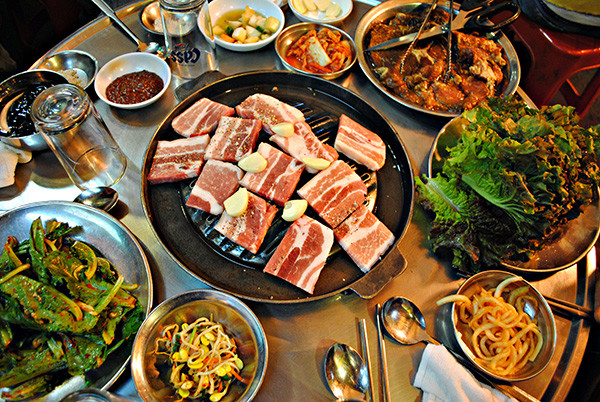Meat and Korean Food Culture
Meat and Korean Food Culture
Korean cuisine is known to be made with a variety of ingredients. Kimchi taking an important part, many Korean dishes form Korea’s unique food culture. Although there are also several kinds of dishes made with meat, Korean cuisine generally has the image of using a lot of vegetables and agricultural products. Some dishes gain attention as health food especially from people in the western world that enjoy much meat and other greasy dishes.
However, this does not mean Koreans don’t really like eating meat.It is true that there is an increase in the number of people who try torefrain from eating beef, pork and poultry for health and physical fitness reasons, but meat is still preferred by the majority of Koreans.
According to a recent survey, grilled meat in restaurants is the most favored dish by Koreans when eating outside their homes. It is easy to find meat restaurants in every neighborhood around cities in the nation. Many people prefer having beef for celebrations and special occasions while pork is much preferred for rather casual gatherings with friends and families.
Grilled pork belly and marinated grilled spare ribs are popular dishes served in company get togethers in Korea.
These days, aside from the usual kinds of meat that people eat, lamb is gaining more popularity among meat lovers. Many Koreans had difficulties in getting familiar with eating the meat from sheep because of its unique smell and toughness. While mutton had such limitations, lamb meat dishes that can be easily found these days is known to be tender with no strong smell, so there is an increase of lamb enthusiasts in Korea, reports say. In Seoul, there are some casual eating places selling dishes made with lamb meat and these places are getting more and more popular among young people.
Lamb is known as healthy meat with low calorie and fat content, and with much protein and minerals good for the body. Especially since this year is the Year of the Sheep, interest on eating lamb dishes is increasing. Reflecting this new trend, it is now easy to find lamb sold along with beef and pork in the fresh meat section of large supermarkets.
The growing demand for lamb leads to an increase of lamb import from overseas, mostly from Australia and New Zealand. Experts predict that since tariffs on lamb will decrease and eventually beabolished, the amount of lamb imported from Oceania will keep increasing in the coming years.
With the growth of economy and improvement of living standards, eating meat has become almost a necessity in Koreans’ meal plans. The growing interest in lamb is expected to diversify the taste of many Koreans who are used to having dishes made with traditional beef and pork, adding a new part in food culture.

'Study > English' 카테고리의 다른 글
| Oscars Not Diverse (0) | 2016.04.05 |
|---|---|
| English Expression Dictionary (0) | 2016.04.05 |
| English Expression Dictionary (0) | 2016.04.04 |
| A New Reality (0) | 2016.04.01 |
| English Expression Dictionary (0) | 2016.04.01 |
